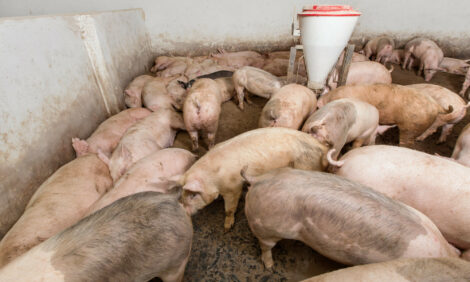



Hungary Livestock and Products Annual 2007
By USDA, Foreign Agricultural Service - This article provides the pork industry data from the USDA FAS Livestock and Products Annual 2007 report for Hungary.Production
Hungary’s swine stock reached a historic bottom (3,987 thousand head) at the end of 2006 due to reduced government subsidies, depressed domestic hog prices, and high feed grain prices. A slight seasonal increase in swine numbers occurred in the spring (4,068 thousand head) and in August (4,120 thousand head).
Pork production remained flat (during the past few years) because increased slaughter hog and pork imports offset the lower domestic hog output.
Consumption
Commercial pork sales have decreased due to increasing poultry meat (turkey) consumption and the growing volume of back-yard killings and the sale of pig meat. Decreasing income in depressed rural areas brought back this illegal practice that represents 10-15% of commercial production by industry estimates.
Since mid-summer 2007, many farms have gone out of the swine production business. The growing volume of unsold pork in the market reduced domestic prices. Producer prices of hogs decreased 13.2 percent between September 2006 and 2007. During the same period of time, agricultural prices grew 25.6 percent, and grain prices 91.8 percent.
Production costs of slaughter hogs (live weight) were about HUF 350/kg (USD 2.00/kg) in the end of October while hog prices on the market were about HUF 260/kg (USD 1.48/kg).
Trade
Since Hungary’s EU membership in 2004, the country’s live hog imports from the EU have increased very much. Main sources of the near 500,000 head net imports in 2006 were Poland, the Netherlands, and Slovakia. Prices of Polish hogs were very low because the suspension of exports to Russia left millions of hogs unsold. Hungary and Poland urged Brussels to consider measures (intervention, export subsidies) to ease saturated markets. The proposal was refused by Brussels.
In the first half of 2007, the live hog imports of Hungary started to decrease and the hog exports started growing, but the import surplus remained big. The export growth in the first half of 2007 was attributed to increased sales to Romania which served to offset the losses of the early year Classical Swine Fever (CSF) outbreak there.
Hungary’s pork imports have also grown faster than exports in the past few years. The positive pork trade balance with the EU decreased to an 8,000 MT import surplus, and the extra EU exports decreased 15% in 2006. Extra EU pork sales remain flat in 2007. Japan suspended pork imports from Hungary from late January to the end of March, 2007 after Hungary discovered CSF cases among wild boars in North Hungary. In 2006, Hungary exported 10,800 MT of pork to Japan, and 9,700 MT of pork to Korea.
Policy
Under threat of hog producer demonstrations, the GOH made an emergency support package for the industry. The planned measures include the payment of HUF 1,800/head (USD 10.00/head) animal welfare support in November/December (originally it was scheduled for next spring). The GOH also promises to cover animal health treatment expenditures and dead corps incineration costs of farms. The EU has approved the use of “de minimis” support to reduce the feed grain storage costs of livestock farms. The use of “private storage” of pork has also approved by Brussels for Hungary so as to ease the depressed pork market. Under this program, pork producers may apply for partial cost coverage if they keep their pork in cold storage for 3, 4, or 5 months. The monthly subsidy is HUF 20.00- 25.00/kilogram (USD 0.11-0.14/kg) depending on the cut of pork.
According to the Swine Breeders Association, the above support measures, worth HUF 10 billion (USD 57 million) may only ease the HUF 30 billion (USD 171 million) swine farm losses, as a result of high feed prices this marketing year.
The GOH and the Association of Agricultural Cooperatives have also proposed an amendment to the Act on Agricultural Land so as to facilitate the land purchase for livestock farms. (Most of livestock farms have no land to produce feed consequently they do not enjoy the “area payments” either). Associations of family farmers refuse the idea of changing the Land Law, taking it for a “Trojan Horse” to get around the current law that prohibits “legal entities” (companies, banks) and foreigners from buying agricultural land in Hungary.
Further Reading
|
|
- You can view the full report, including tables, by clicking here. |
List of Articles in this series
To view our complete list of 2007 Livestock and Products Annual reports, please click hereNovember 2007








